Updated: 03-Jul-2019
IHI stands for "Ishikawajima Harima Industries" (see), sometimes written "Ishikawajima Harima Heavy Industries" as IHHI, (see). It turns out that the real name is "Ishikawajima Harima Jukogyo Kabshiki Kaisha".
-Through crossing information, it is believed to be closely related to Nakajima since during WWII, engines were manufactured under the Nakajima and Ishikawajima names, as is the case of the first jet engines that were made.

“Kikka”
-The Nakajima Ki- "Kikka" airplane was the Japanese equivalent of the Messerschmitt Me-262. In fact the technical drawings on which it was based were those of the German.
-As for the engines, a submarine that had a BMW-003 engine onboard together with its technical drawings was sunk, and the only material that could be saved, was that what Commander Eichi Iwaya was carrying himself on another submarine, which were some photographs and some basic drawings, including a drawn cutaway. At the Naval Technical Arsenal this material was studied and developed by Eichi Iwaya. Then the manufacturing was distributed.
-The first Japanese jet engine is known as the Nakajima Ne-12 that gave 340 Kgf of thrust. (Fuji Heavy Industries -FHI- was the heiress of Nakajima, today it includes Subaru, Robin, etc).
-It was an engine that initially had a centrifugal compressor and was modified with a four-stage axial compressor. The Nakajima Ne-12B was going to be the one mounted on the Kikka.
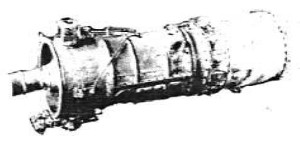
“Ne-20”
-The Ne-20 was immediately available (Nakajima Ne-20 and Ishikawajima Ne-20). This engine already gave 475 Kgf of thrust at 11,000 rpm. The engine measured 2.7 meters long by 0.62 meters in diameter and was installed on the Ki- Kikka.
-The Ne-20 is considered to be Japan's first operational jet engine.
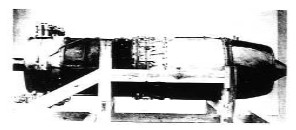
“Ne-20, photo IHI”
-It was also proposed for the Yokosuka Ohka Model 43, as we see below.
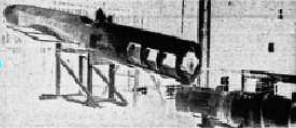
“Ne-20 next to an Ohka model” (PiP)
-The Ne-20 was followed by projects of other engines of the same family like the Ne-130, turbojet engine with 900 Kgf of thrust at 9,000 rpm. Its dimensions were 3.85 m long by 0.85 m in diameter.
-There was the planned Ne-230 turbojet with 885 Kgf of thrust at 8,100 rpm. Its dimensions were: 3.43 m long by 0.87 m in diameter.
-And the Ne-330, turbojet engine with 1,300 kgf of thrust at 7,600 rpm was 4 m long and 1.18 m in diameter.
-In reality the development for the Ne-130 was assigned to Tsikajima-Shibaura.
-The Ne-230 to Hitachi-Nakajima and the Ne-330 to Mitsubishi. But the war ended before that.
-Three Ne-20 engines can be seen at the NSAM.
-Later, towards the mid 1950's, they begin with the construction under license of the GE J-79 for the F-104 Starfighter of its Defense Department.
-Under license they have also built the T-56, T-58, T-64, TF-40 (Adour), F-100, F-110, T-700, Artouste and Astazou.
-For example, the TF-40 had internal IHI designation IHI-801A and was a RR/Turbomeca license from the "Adour" turbofan, and was used on the Mitsubishi F-1.
-IHI intervenes in joint international projects such as the V-2500 (IAE).
They made the JT8D, and takes part in the RB-211 and RJ-500 projects, the latter two with RR.
-IHI has manufactured whole engines and spare parts, has researched and developed, and has carried out general overhauls and maintenance. Below we relate a list of engines that comply with one or another of the mentioned reasons:
Ne-20, J-47, J3, J -79, CT / T58, XJ-11, JR-220. Artouste, Bastan and Astazou. JT8D, T-64, TF-40, FJR710, RB-211, F3, T56, F100, CF6, RJ500, Arriel, T700, Makila, GE90, CFM56, CT7, CF34, Trent, etc. And the ITS-90 turboprop with 900 SHP.

“IHI, F-3”
The F-3-IHI-30 is a genuine Japanese design. It is a 2-shaft turbofan that delivers 3,680 of thrust.
-It was based on a J-3 design from 1959. The first XF-3-1 version comes out in 1979 and three years later the -30 model that was certified in 1986.
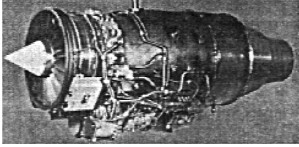
“IHI, F-3”
-IHI overhauls and repairs an endless number of engines and intervenes in special activities of Japanese programs.
-In aerospace matters, it intervenes in the production of Japanese rockets such as the H-IIA, by manufacturing the fuel turbo-pumps for the main engines (LE-7A).
-They intervene in the GX's second stage, a launch vehicle for small and medium-sized satellites. And in the JAXA MV rocket.
-This is effected by IHI Aerospace Co.Ltd.

“GX”
From Appendix 6: The J3 engine was a native design that was intended for the Fuji T1-B aircraft. The first J3 is from 1955, flying the first YJ-3 after five years. The one shown is the J3-3 variant.

“El IHI J3-3”
-Another IHI engine was the FJR710, a two-shaft turbofan that we show in the picture below.
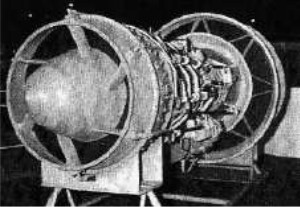
“IHI model FJR710-10”
-They also manufactured under license but it is in 1959/60 when the Division of Aeromotors is created.
-IHI joins Harima Shipbuilding Shipyards to carry this out, hence it is sometimes mentioned as IHHI. (Ishikawajima Harima Heavy Industries).
-This engine Division made under license the GE-J47, J-79, CT-58, T-64, CJF801, TF-40, F100, F110, etc. for the aircraft of the Japan Defense Agency, as well as several foreign clients.

“J3”

“YJ3-IHI-3”
-It was responsible for the revision and repair (among others) of the CJ-8095, JT8D, Artouste, Astazou and Bastan, for their area.
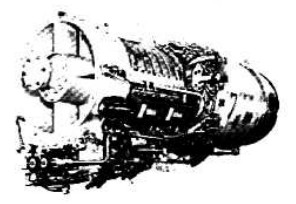
“J3-IHI-7C”
-The J3 is an engine built by IHI but designed by the Nippon Jet Engine Company in 1956, of which there were several versions such as the J3-IHI-3, with the classical architecture at that time.

“XJ-11”
-Other versions reached 3,080 lbf like the J3-IHI-7C
-There was a turbofan known as the J3-IHI-F with 3,780 lbf of thrust.
-The J3 gave way to the F3 version as discussed above.
-In conjunction with NAL, engines were built for vertical takeoff for V/STOL aircraft. The IHI / NAL XJ-11 came out from J3 and its tests were carried out in 1964.
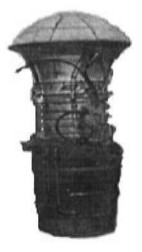
“IHI / NAL JR-100”
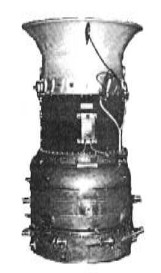
“JR-200”
-The IHI / NAL JR-100 was the next vertical takeoff engine (they were upright inside the fuselage) with 3,180 lbf of thrust.
-The JR-200 version delivered 4,585 lbf of thrust. It was followed by the JR-300.
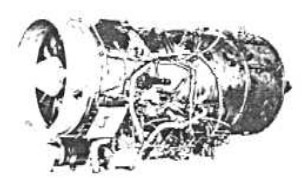
“XF3-20”
-The F-3 that was already discussed above, is the development of the J-3.
-In collaboration with Mitsubishi the XH3 was made, and together with Kawasaki the FJR-710. With the RR and Jaec, the RJ-500.
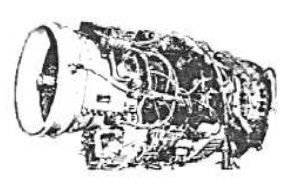
“XF3-30”
-In 1977, the XF3-20 with 3,660 lbf, and the XF3-30 with 3,860 lbf, etc.
-The latter was selected by JASDF for their XT-4 trainer aircraft.
-Of course it also intervenes in the V-2500 program, mentioned in the IAE section.
-As already mentioned, the IHI turbojet era began with the Ne-20, which was the first Japanese engine of this type. It was made at the Shibaura factory.
But at Ishikawajima they had started with the TR-10, TR-12 and TR-12B.

“TR-12B”
-Known by TR, some authors attribute it to TurboReactor.
-Perhaps it refers to Toku-Ro, designed by Naval Arsenal in Kugisho.
-Maybe it's a translation issue. The truth is that these engines were soon called "Ne" (from "Nensho" or combustion rocket).
-As we said before, IHI made the Ne-20 but at the end of the war in 1945 it was already building the Ne-130.
Engines of IHI
Model: F-3
Arquitecture:
Compressor/s:
Combustion chambers:
Turbines:
Power / Thrust: / ---
Weight:

"IHI, F-3 fig. 2"
Model: FJR-710
Arquitecture:
Compressor/s:
Combustion chambers:
Turbines:
Power / Thrust: / ---
Weight:

"IHI FJR710-10"
Model: J-3
Arquitecture:
Compressor/s:
Combustion chambers:
Turbines:
Power / Thrust: / ---
Weight:

"IHI J3-3"
Model: JR-100
Arquitecture:
Compressor/s:
Combustion chambers:
Turbines:
Power / Thrust: / ---
Weight:
Model: JR-200
Arquitecture:
Compressor/s:
Combustion chambers:
Turbines:
Power / Thrust: / ---
Weight:
Model: JR-220
Arquitecture:
Compressor/s:
Combustion chambers:
Turbines:
Power / Thrust: / ---
Weight:
Model: Ne-12, -12B (WWII)
Arquitecture: Turbojet
Compressor/s:
Combustion chambers:
Turbines:
Power / Thrust: --- / 340 Kgf
Weight:
Model: Ne-20 series (WWII)
Arquitecture: Turbojet
Compressor/s: 8-stage axial compressor
Combustion chambers: Annular combustion chamber
Turbines: 1 axial stage
Power / Thrust: --- / 475 Kgf
Weight: 470 Kg

"IHI, Ne-20"
Model: Ne-30
Arquitecture: Turbojet
Compressor/s:
Combustion chambers:
Turbines:
Power / Thrust:
Weight:
Model: Ne-330
Arquitecture:
Compressor/s:
Combustion chambers:
Turbines:
Power / Thrust: / ---
Weight:
Model: TR-10
Arquitecture:
Compressor/s:
Combustion chambers:
Turbines:
Power / Thrust: / ---
Weight:
Model: TR-12, -b
Arquitecture:
Compressor/s:
Combustion chambers:
Turbines:
Power / Thrust: / ---
Weight:
Model: XF-3
Arquitecture:
Compressor/s:
Combustion chambers:
Turbines:
Power / Thrust: / ---
Weight:
Model: XJ-11
Arquitecture:
Compressor/s:
Combustion chambers:
Turbines:
Power / Thrust: / ---
Weight:


